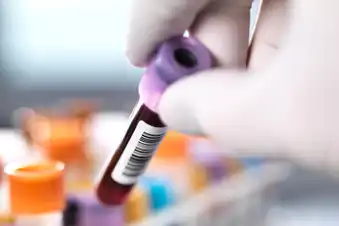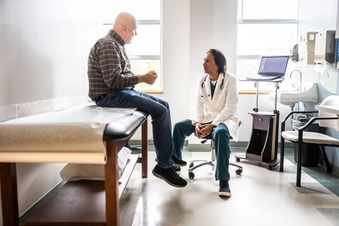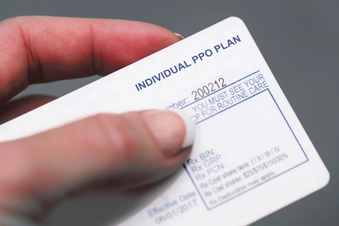Barriers That Impact Access to Prostate Cancer Diagnosis and Treatment

Many Men Don’t Know About PSA Tests
A digital rectal exam (DRE) isn’t the only type of prostate cancer screening. Your doctor may give you a prostate-specific antigen (PSA) test first. PSA is a protein your prostate gland makes. If your blood has high levels, your doctor may recommend more tests in addition to a DRE, such as imaging or another PSA test.

Fear of Discomfort or Bad News
Some men assume the worst when it comes to getting screened for prostate cancer. They’re scared the test might be positive or they think digital rectal exams are extremely painful or unsafe. But the test is done fairly quickly: You stand up with your waist bent or lie on your side with your knees bent. Your doctor gently uses a gloved finger coated with lubricant to press on your prostate and feel inside the rectum. Like everything, minor complications are possible. You may feel a bit of discomfort or have minor bleeding in rare cases. There’s also a very minor risk of infection.

Thinking It’s for Older Men
The Prostate Cancer Foundation recommends talking to your doctor about prostate cancer screenings once you reach your 45th birthday. (Age 40 if you’re Black or have a family history of prostate, ovarian, breast, colon, or pancreatic cancer.) Cancer that’s caught early is easier to treat, and the five-year survival rate is almost 100%. That’s the percentage of people still alive five years after diagnosis.

Poor or No Insurance Coverage
You might avoid screenings if you don’t have health insurance or your insurance doesn’t cover much. There’s no federal law that requires private health insurers to cover screenings or offer no-cost testing. But some states and organizations, like the ZERO Cost to Prostate Cancer Screening Initiative, are working to change legislation in an effort to improve access.

Financial Barriers
A lower socioeconomic status can make it harder to get the care you need. If you do get checked and find out you have prostate cancer, it’s more likely to be advanced. This could mean more complicated and expensive treatment. Other barriers include high out-of-pocket costs, which may lead to skipping medication or avoiding treatment.

Living in Rural Areas
It can be harder to get good care when you live far from urban areas, where most big medical centers and specialists are located. Because of this, doctors are less likely to diagnose prostate cancer early when it’s easier to manage. And the costs associated with travel and paying for a place to stay – whether early or late in diagnosis – could cause financial strain.

Concerns About Masculinity
In a 2017 study of more than 3,000 men, some said they didn’t like the idea of a doctor touching their rectal area. Others mistakenly thought screening would affect their ability to have sex. Some were afraid a prostate cancer diagnosis would trigger erectile dysfunction (ED).

No Signs or Symptoms
According to a recent survey of 1,200 men ages 45 and older, 1 in 4 Black men and 1 in 4 Hispanic men didn’t think they needed a prostate cancer screening if they didn’t have symptoms. But in most cases, symptoms show up only when prostate cancer is advanced and harder to treat.

Not Knowing the Signs or Symptoms
In the same survey, 56% of those men didn’t know erectile dysfunction (ED) may be a sign of prostate cancer. While most men with prostate cancer don’t have symptoms until it’s more advanced, signs to look out for along with ED include: trouble peeing, blood in your pee or semen, and pain. Weakness, numbness, weight loss, and fatigue are also symptoms.
Show Sources
IMAGES PROVIDED BY:
- Science Photo Library/Getty Images
- DigitalVision/Getty Images
- Moment/Getty Images
- iStock/Getty Images
- Westend61/Getty images
- The Image Bank/Getty Images
- DigitalVision/Getty images
- Moment/Getty Images
- iStock/Getty images
SOURCES:
Cancer Nursing: “Barriers to Prostate Cancer Screening.”
Public Library of Science: “Men’s perspectives of prostate cancer screening: A systematic review of qualitative studies.”
American Cancer Society: “American Cancer Society Recommendations for Prostate Cancer Early Detection,” “American Cancer Society survey of nearly 1,200 men aged 45+ in the U.S. reveals gaps in awareness and misconceptions of prostate cancer screening guidelines,” “Screening Tests for Prostate Cancer,” “Signs and Symptoms of Prostate Cancer.”
Hollings Cancer Center: “New Hollings study reveals barriers, presents solutions to improve prostate cancer screening among Black men.”
Keck Medicine of USC: “Don’t Be Afraid of the Prostate Exam.”
Prostate Cancer Foundation: “Early Screening and Detection.”
Zero Prostate Cancer: “Free Prostate Cancer Testing Near You,” “Removing Barriers to Prostate Cancer Care,” “Understanding Health Equity in Prostate Cancer.”